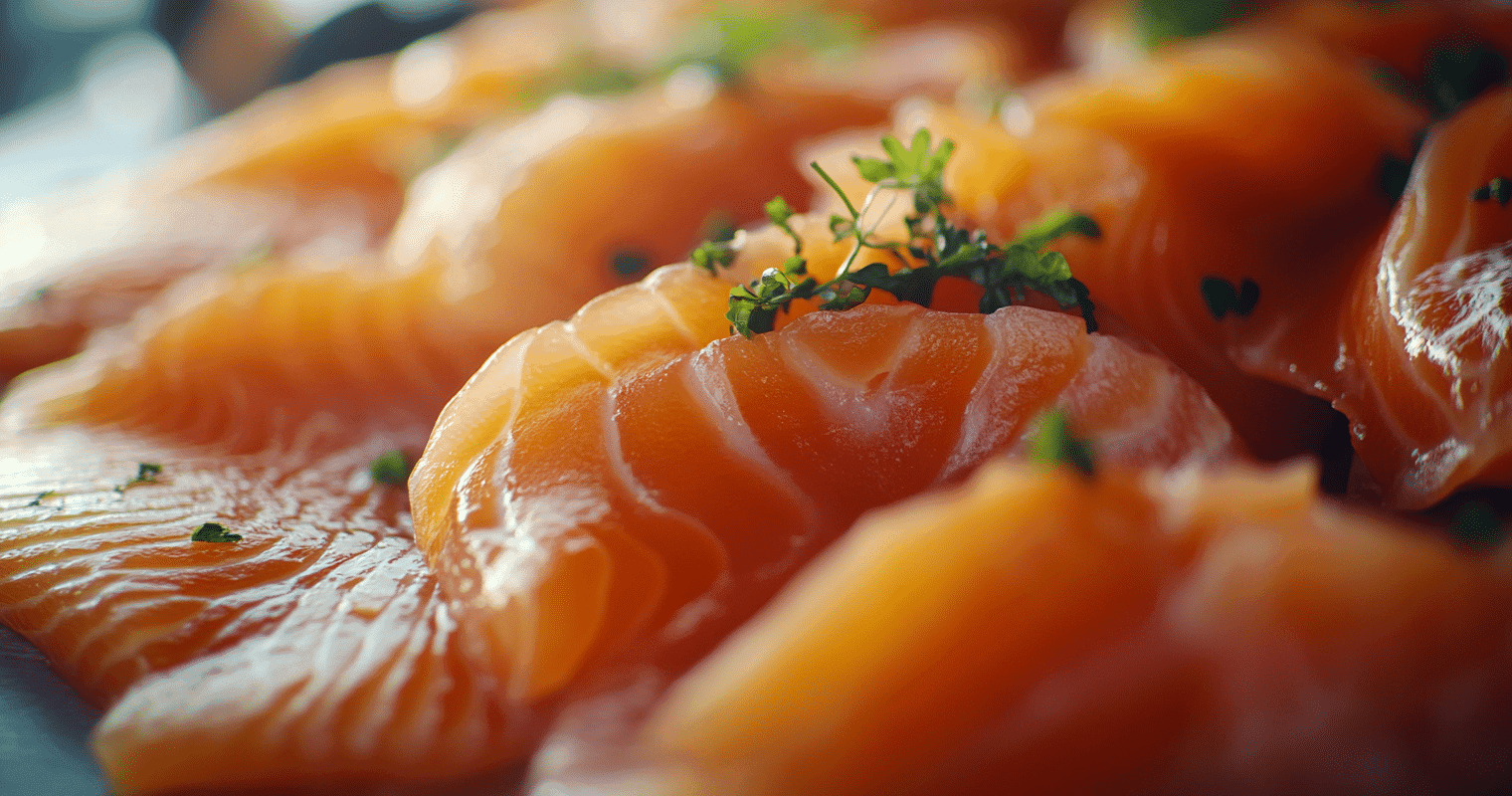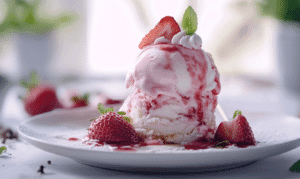Jump to:
Estimated reading time: 8 minutes
Table of contents
Introduction
Smoked salmon is a delicacy that captivates food lovers worldwide due to its rich, smoky flavor and tender texture. While many enjoy it straight from the package, there is often a question: Can I cook smoked salmon? The short answer is yes, but knowing how to cook smoked salmon properly is essential to preserving its flavor, texture, and nutritional value. Whether it’s a breakfast spread, an elegant appetizer, or a main course, smoked salmon can shine in any dish if prepared correctly.
In this comprehensive guide, we’ll explore how to cook smoked salmon properly, whether you’re working with cold-smoked or hot-smoked varieties. Additionally, we’ll dive into the best cooking techniques, provide a variety of recipes, and offer expert tips to help you make the most of this flavorful fish. By the end of this article, you’ll have all the knowledge needed to cook smoked salmon properly and create mouthwatering dishes that everyone will love.
What is Smoked Salmon?
Before diving into how to cook smoked salmon properly, it’s important to understand what smoked salmon is and the two main types of smoking methods used. Each type requires different cooking approaches.
Cold-Smoked Salmon
To prepare cold-smoked salmon, cure the fish with salt and then smoke it at low temperatures (below 90°F or 32°C). This process infuses the salmon with a mild smoky flavor while preserving its raw texture. Cold-smoked salmon has a silky, smooth texture, and people commonly serve it in thin slices on bagels, crackers, or salads
Hot-Smoked Salmon
In contrast, hot-smoked salmon is fully cooked during the smoking process at temperatures ranging from 120-180°F (49-82°C). The result is a firmer, flakier texture with a more intense smoky flavor. Hot-smoked salmon is versatile and can be used in both cold and hot dishes. Learning how to cook smoked salmon properly is especially important when working with hot-smoked salmon, as its texture can hold up better in various cooked recipes.
Can You Cook Smoked Salmon?
Yes, you can cook smoked salmon, but the approach varies depending on whether you’re using cold-smoked or hot-smoked salmon. Cooking cold-smoked salmon requires a delicate touch to preserve its texture, while hot-smoked salmon offers more flexibility and works well in many cooked dishes
Cooking Cold-Smoked Salmon
People typically serve cold-smoked salmon raw but cured, making it ideal for dishes that don’t require much heat. However, you can still incorporate it into warm dishes if handled with care. The goal is to warm it gently without cooking it fully, as too much heat can make the salmon tough and dry. Here are some methods to cook cold-smoked salmon properly.
1. Lightly Warm Cold-Smoked Salmon
One of the best ways to cook smoked salmon properly is to warm cold-smoked salmon gently. You can achieve this by using methods that involve indirect or low heat, ensuring the texture stays tender.
- Steaming: Place the cold-smoked salmon in a steamer for just a couple of minutes. The gentle steam will warm it up without overcooking.
- Poaching: Simmer water or broth at a low temperature and gently poach the cold-smoked salmon for 1-2 minutes, just enough to heat it without affecting the texture.
2. Add Cold-Smoked Salmon to Warm Dishes
Another effective way to cook smoked salmon properly is to add cold-smoked salmon to already warm dishes. By incorporating it at the last minute, you allow the heat from the dish to warm the salmon without cooking it fully.
- Pasta: Add cold-smoked salmon to a hot pasta dish just before serving. The warmth of the pasta will gently heat the salmon, maintaining its delicate texture. For more inspiration on how to incorporate smoked salmon in your meals, check out Best Smoked Salmon Recipes.
- Scrambled Eggs: Fold thin slices of cold-smoked salmon into freshly scrambled eggs right before serving. The residual heat from the eggs will warm the salmon while preserving its tenderness.
3. Avoid High-Heat Cooking Methods
High-heat methods like grilling, frying, or baking are not ideal for cold-smoked salmon. These methods can cause the fish to become tough, rubbery, and lose its characteristic silky texture. Instead, stick to gentler cooking techniques that allow you to cook smoked salmon properly while maintaining its quality.
Cooking Hot-Smoked Salmon
Hot-smoked salmon, on the other hand, is already fully cooked during the smoking process. This makes it much easier to work with when incorporating it into various cooked dishes. Learning how to cook smoked salmon properly using the hot-smoked variety involves reheating it without drying it out and incorporating it into recipes where its firmer texture and strong smoky flavor can shine.
1. Reheat Hot-Smoked Salmon
Hot-smoked salmon is ready to eat as-is, but you can reheat it if needed. The key to reheating hot-smoked salmon and ensuring you cook smoked salmon properly is to do so gently to avoid drying it out.
- Oven: Preheat your oven to 275°F (135°C). Place the hot-smoked salmon on a baking sheet, cover it with foil, and reheat for about 10-15 minutes until warmed through. This method helps retain moisture and prevents overcooking.
- Microwave: For a quicker method, place the hot-smoked salmon on a microwave-safe plate, cover it with a damp paper towel, and microwave it for short intervals (15-20 seconds) until warm.
2. Incorporate Hot-Smoked Salmon Into Cooked Dishes
Hot-smoked salmon can be flaked or chopped and added to a variety of cooked dishes. Because it’s already fully cooked, you don’t need to worry about cooking it further; simply reheat and enjoy. Food Network’s smoked salmon recipes can offer even more ways to explore smoked salmon in different meals.
- Smoked Salmon Chowder: Flake hot-smoked salmon into a creamy chowder. The fish adds richness and smoky depth to the dish.
- Smoked Salmon Quiche: Fold chunks of hot-smoked salmon into a quiche or frittata for a savory, flavorful breakfast or brunch option.
- Smoked Salmon Risotto: Stir hot-smoked salmon into a risotto just before serving. The smoky flavor pairs beautifully with the creamy rice.
3. Grill Hot-Smoked Salmon
Grilling is a great option for hot-smoked salmon if you’re looking to enhance its flavor with a bit of char. Since it’s already cooked, you only need to grill it for a few minutes to warm it and add some extra smoky goodness. For more tips on cooking and serving smoked salmon, check out this guide from Serious Eats.
Recipes to Cook Smoked Salmon
Now that you understand the basics of how to cook smoked salmon properly, let’s dive into some delicious recipes that showcase both cold-smoked and hot-smoked salmon. These dishes range from quick snacks to gourmet meals, and they highlight how smoked salmon can elevate any dining experience.
Tips for Cooking Smoked Salmon Perfectly
To ensure your smoked salmon dishes turn out perfectly, follow these tips on how to cook smoked salmon properly:
- Choose High-Quality Smoked Salmon
Start with the best smoked salmon you can find. Look for sustainable options with minimal preservatives and artificial ingredients. Fresh, high-quality smoked salmon will ensure better flavor and texture in your dishes. - Control Cooking Temperatures
When reheating or incorporating smoked salmon into hot dishes, always use low to medium heat. High heat can cause the fish to become dry and tough. By controlling the temperature, you’ll maintain the salmon’s delicate texture and ensure you cook smoked salmon properly. Bon Appétit’s tips on cooking smoked salmon can guide you in maintaining the right texture. - Pair Smoked Salmon with Complementary Flavors
Enhance the flavor of your smoked salmon dishes by pairing it with complementary ingredients. Classic pairings include:
- Herbs: Fresh dill, chives, or parsley
- Dairy: Cream cheese, goat cheese, or sour cream
- Citrus: Lemon or lime juice
- Crunch: Cucumber, radish, or toasted bread
These complementary ingredients will help you cook smoked salmon properly while elevating the overall dish.
Frequently Asked Questions (FAQ)
Even with a solid understanding of how to cook smoked salmon properly, there may still be some lingering questions. Here are some frequently asked questions to further clarify how to prepare, store, and serve smoked salmon.
1. Can you eat smoked salmon without cooking it?
Yes, both cold-smoked and hot-smoked salmon can be eaten without further cooking. Cold-smoked salmon is typically eaten as-is, while hot-smoked salmon is fully cooked during the smoking process. However, reheating hot-smoked salmon or incorporating it into cooked dishes can enhance its flavor.
2. Is it safe to cook cold-smoked salmon?
Yes, it is safe to cook cold-smoked salmon, but it requires a delicate approach. Since cold-smoked salmon is raw but cured, it’s best to warm it gently to avoid ruining its texture. Methods like steaming or adding it to already warm dishes work best for cooking smoked salmon properly.
3. What’s the difference between hot-smoked and cold-smoked salmon?
The primary difference lies in the smoking process and the final texture. Cold-smoked salmon is smoked at low temperatures and retains a raw, silky texture, while hot-smoked salmon is smoked at higher temperatures, fully cooking it and giving it a firmer, flakier texture. Hot-smoked salmon can be used in a variety of cooked dishes, whereas cold-smoked salmon is best enjoyed lightly warmed or raw.
4. How do you prevent smoked salmon from drying out when cooking?
To prevent smoked salmon from drying out, use gentle cooking methods such as steaming, baking with foil, or poaching. If reheating, make sure to cover the salmon to retain moisture, and avoid cooking it at high temperatures for prolonged periods.
Conclusion
In summary, smoked salmon is not only delicious but also versatile, nutritious, and easy to incorporate into various dishes when you know how to cook smoked salmon properly. Whether you’re preparing a quick snack, an elegant appetizer, or a flavorful main course, smoked salmon can elevate any meal with its unique smoky richness. By following the tips, techniques, and recipes in this guide, you’ll be well-equipped to handle smoked salmon like a pro, creating dishes that are sure to impress family and friends alike.
By following the techniques, recipes, and tips in this guide, you’ll master the art of cooking smoked salmon and enjoy its rich, smoky flavor in a variety of creative dishes. For more pairing ideas, explore Smoked Salmon Best Pairings and start crafting mouthwatering meals with this delicacy. Happy cooking!






